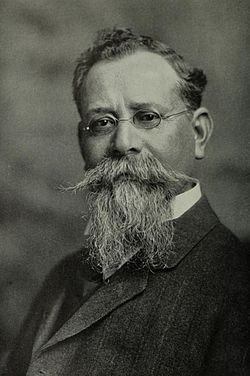Mexican oil expropriation

The Mexican oil expropriation (
Background
| History of Mexico |
|---|
 |
| Timeline |
|
|

On August 16, 1935, the Petroleum Workers Union of Mexico (Sindicato de Trabajadores Petroleros de la República Mexicana) was formed and one of the first actions was the writing of a lengthy draft contract transmitted to the petroleum companies demanding a
On November 3, 1937, the union demanded that the companies sign the collective agreement and on May 17, the union summoned a strike in case their demands were not met. On May 28 the strike became effective throughout the country.
The petroleum workers' struggle was well regarded by the President and the population despite problems caused by the petroleum shortage. Due to these problems, the union accepted a lift of the strike on June 9, after the president urged them to present their case before the General Arbitration and Conciliation Board (Junta General de Conciliación y Arbitraje). In July, as instructed by the arbitration board, a commission of financial experts was formed that investigated the petroleum companies' finances, concluding that their profits easily permitted them to cover the demands of the workers. The report stated that just one company (El Aguila) had received annual profits of over 55 million pesos. The arbitration board concluded that the oil companies should pay 26 million pesos for wages and benefits to the workers.[3] The companies, however, insisted the demands would cripple production and bankrupt them, and refused to pay. The president once again intervened to mediate between the parties, and met with oil company representatives at the
But, on December 8, the companies hired other unemployed workers and had not responded to the
Consequently, the foreign companies rebelled against the imposed contract, and the maximum Judicial Authority responded by rendering a decision on March 1, giving the companies until March 7 to pay the 26 million pesos penalty.
In 1935, all companies in the business of extraction, processing, and exporting of oil in Mexico were foreign companies with foreign capital. These companies attempted to block the creation of
On December 27, 1935, the Sindicato Único de Trabajadores Petroleros was created, despite the legal opposition in the
Legal conflicts
After the publication of the findings, the oil companies threatened to leave Mexico and take all of their capital with them. The government entity in charge of the conflict between these companies and the union, the Junta Federal de Conciliación y Arbitraje (Federal Conciliation and Arbitration Board), was not able to make a decision quickly and the union declared a 24-hour strike in protest on December 8.
On December 18, the Arbitration Board declared in favor of the union. The oil companies had to pay 26 million
Oil Expropriation Day, March 18, 1938
On March 18, 1938 President Cárdenas embarked on the expropriation of all oil resources and facilities by the state, nationalizing the
).On June 7, 1938, President Cárdenas issued a decree creating Petróleos Mexicanos (PEMEX), with exclusive rights over exploration, extraction, refining, and commercialization of oil in Mexico. On June 20, PEMEX started operations.
Opposition
International
In retaliation, the oil companies initiated a
Domestic
The key to the success of the measures taken by Cárdenas was not just to control the opposition, but to develop and train qualified domestic personnel who could keep afloat an industry that had been maintained thus far by foreign management. The government relied on the
Critics of the expropriation argue that since PEMEX took control of the nation's petroleum, it has suffered from corruption in administrations since that of Cárdenas, and point to its political use by PRI (
See also
References
- ^ Jonathan C. Brown, "Petrolem: Pre-1938" in Encyclopedia of Mexico, p. 1082. Chicago: Fitzroy Dearborn 1997.
- ISBN 968-12-0969-9.
- ISBN 968-24-6669-5.
- ISBN 968-24-6669-5.
- ^ quoted in Enrique Krauze, Mexico: Biography of Power. New York: HarperCollins 1997, p. 474
- ^ Krauze, Mexico: Biography of Power, p. 475
- ^ "How the Allied multinationals supplied Nazi Germany throughout World War II".
- ISBN 0826321607;
- ^ "Oil - production - Country Comparison".
- ^ Daniel Yergin, (2009). "The Prize, the Epic Quest for Oil, Money & Power". Free Press
Further reading
- Brown, Jonathan C. Oil and Revolution in Mexico. Berkeley: University of California Press 1993.
- Brown, Jonathan C. and Alan Knight, eds. The Mexican Petroleum Industry in the Twentieth Century. Austin: University of Texas Press 1992.
- Gordon, Wendell. The Expropriation of Foreign-Owned Property in Mexico (1941)
- Hall, Linda B. Oil, Banks, and Politics: the United States and Postrevolutionary Mexico, 1917-1924. Austin: University of Texas Press 1995.
- Jayne, Catherine E. Oil, war, and Anglo-American relations: American and British reactions to Mexico's expropriation of foreign oil properties, 1937-1941 (Praeger, 2001)
- Maurer, Noel. "The empire struck back: sanctions and compensation in the Mexican oil expropriation of 1938." Journal of Economic History 71.03 (2011): 590–615. online
- Meyer, Lorenzo. Mexico and the United States in the oil controversy, 1917–1942 (University of Texas Press, 2014)
- Rippy, Merrill. Oil and the Mexican Revolution. Leiden: Brill 1972.
- Wirth, John D., ed. Latin American Oil Companies and the Politics of Energy. Lincoln: University of Nebraska Press 1985.
